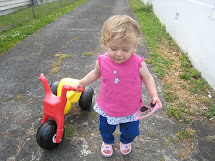A research conclusion released this week from the University of Edinburgh, that ‘breeding’ is responsible in only small measure – as little as 10% - for ultimate racing outcome, comes as little surprise to me.
Nor would it, I venture, to most people.
We can quibble about the percentage but it’s stating the bleeding obvious – and the researcher presumably got paid for his trouble!
The findings were summarized in an article appearing on today’s ANZ Bloodstock News.
I must stress that I have only read this report and not the actual report per se.
The researcher’s ‘discovery’, that paying a bucket-load for a stud fee or an untried young horse doesn’t guarantee you anything – does anyone reading this blog not know that? !!
Perhaps the news has taken a while to filter through Hadrian’s Wall, or has been up till now a secret known only to the Irish and the Arabs.
Of course the jockey has a huge bearing on it. If he insists on running up the bums of the other runners then it doesn't matter if he's riding Phar Lap.
The research conclusion, simply stated, is: give a horse the best opportunity and you'll have a greater chance of a positive outcome. Rocket science.
My mantra for years has been that breeding accounts for 40% and what I call ‘man management’ – everything from gestation to the starting gate - accounts for the other 60%.
However, differing from the scientists, I believe the 40% is crucial. If the breeder doesn’t get that ‘right’ - whether by design or by accident - then it won’t matter how good the 60% is, the horse’s mechanical, constitutional and mental/moral limitations as determined genetically will prevent it getting to the top. Therefore, cleverly-bred horses, all other things being equal, start with an edge.
Just from the news release, there seems to be an obsession with the stallion’s influence when discussing pedigree. Apart from those who stand stallions who might have us believe otherwise, the rest of us have known for ages that their influence has been over-stated, over-rated and over-charged.
The report summary also states that the researcher found we should “worry less about studs and concentrate on what happens after”.
There's a semantic problem here. I presume the researcher is non-American and would use the word 'stud' in the way we do, meaning 'farm', whereas in American the word 'stud' commonly means 'stallion'. The context is not entirely clear in the article.
If it's the former, I would dispute that forever. I’ve found a definite correlation between rearing (the environment and management) and success – as diligent participants in the game, we have come to learn where the good horses come from with regularity and, on the other hand, we know the farms where, despite their best efforts, they can't crack it.
If it's the latter, I would dispute it less. However, trying to select a good physical match and avoiding crazy genetic experiments still seem important to me. Countless good horses have been bred by random selection - because the stallion "stands just down the road".
I look forward to reading the findings in their entirety some time. However, I'm in no rush; if the article in ANZ Bloodstock News is anything to go by I don’t expect to be enlightened much.
Subscribe to:
Post Comments (Atom)



















2 comments:
I think that the research is saying the THE PRICE of the service is of little importance to potential winnings. I don't think that it saying that breeding is of little importance, just that advertised pricing has no corelation to good breeding. Anyway, I am enjoying your blog very much and look forward to your futher views on this research should you ever read it. Thanks
I though I said that. The research summary has two main planks: "the best genes don't necessarily come with the highest price tag" (agree - you have to match your mare with the stallion that suits not the one which costs the most); and "genes accounted for only 10% of the prizemoney a horse wins in its lifetime" (seems so low as to have almost NO influence, I beg to differ).
Post a Comment